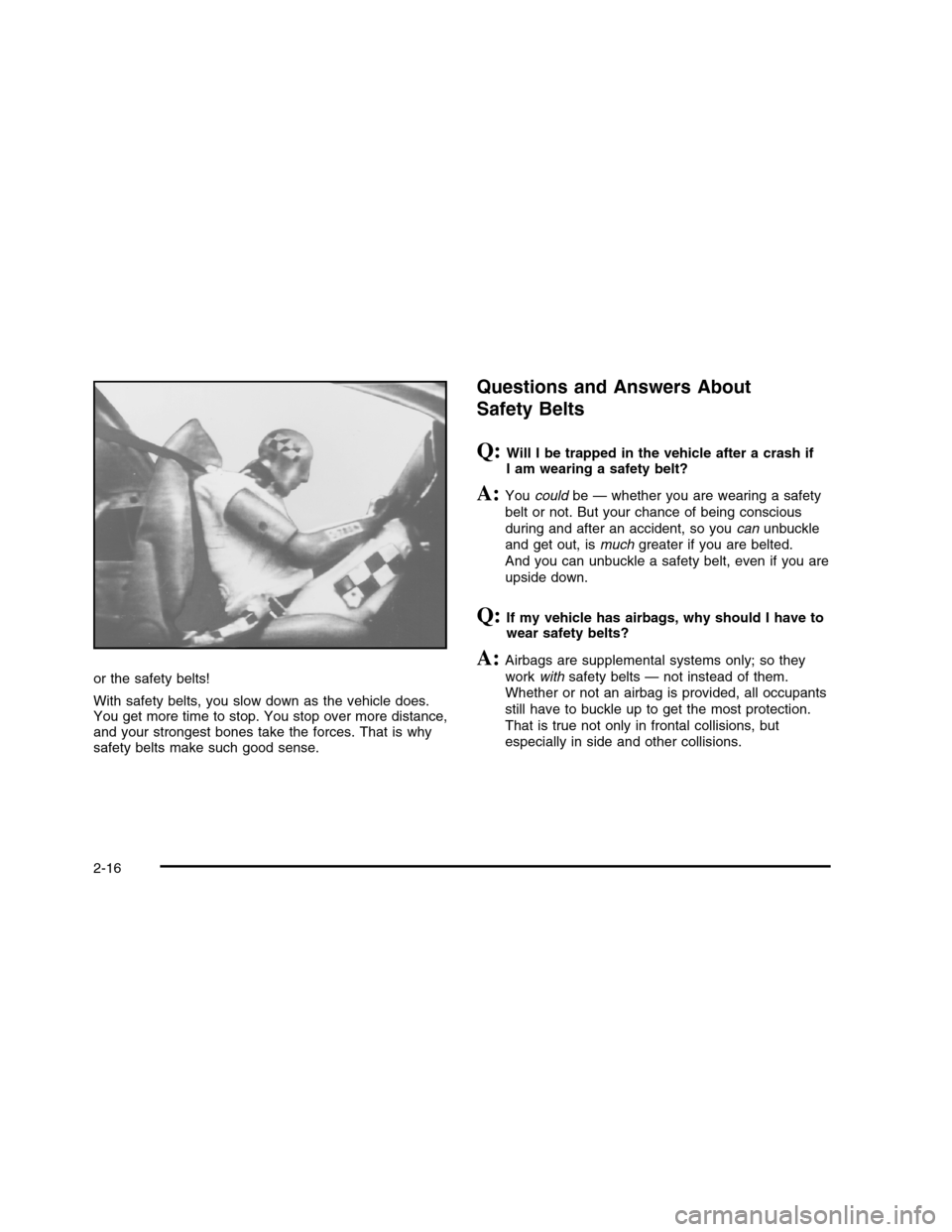ESP CADILLAC DTS 2010 1.G Owners Manual
[x] Cancel search | Manufacturer: CADILLAC, Model Year: 2010, Model line: DTS, Model: CADILLAC DTS 2010 1.GPages: 480, PDF Size: 17.56 MB
Page 27 of 480

Performance and Maintenance
Traction Control System (TCS)
The traction control system limits wheel spin. Thesystem turns on automatically every time the vehicle isstarted.
•To turn off traction control, press and releaseiin
front of the shift lever.Filluminates and the
appropriate DIC message is displayed. SeeDICWarnings and Messages on page 4-67.
•Press and release the button again to turn on
traction control.
For more information, seeTraction Control System(TCS) on page 5-6.
StabiliTrak®
The vehicle may have the StabiliTrak system thatassists with directional control of the vehicle in difficultdriving conditions. The system turns on automaticallyevery time the vehicle is started. The system cannot beturned off.
For more information, seeStabiliTrak®System onpage 5-5.
Tire Pressure Monitor
This vehicle may have a Tire Pressure MonitorSystem (TPMS).
The Tire Pressure Monitoralerts you when asignificant reduction inpressure occurs in one ormore of the vehicle’s tiresby illuminating the low tirepressure warning light onthe instrument cluster.
The warning light will remain on until the tire pressure iscorrected. The proper tire pressures for your vehicleare listed on the Tire and Loading Information labellocated on the driver side center pillar (B pillar). SeeLoading the Vehicle on page 5-18.
You may notice during cooler conditions that the low tirepressure warning light will appear when the vehicle is firststarted and then turn off as you drive. This may be anearly indicator that your tire pressures are getting low andthe tires need to be inflated to the proper pressure.
Note:The Tire Pressure Monitor can alert you aboutlow tire pressure, but it does not replace normal monthlytire maintenance. It is the driver’s responsibility tomaintain correct tire pressures.
SeeTire Pressure Monitor System on page 6-57andTire Pressure Monitor Operation on page 6-58.
1-21
Page 29 of 480

Roadside Service
U.S. or Canada:1-800-882-1112
TTY Users:1-888-889-2438
As the owner of a new Cadillac, you are automaticallyenrolled in the Roadside Service program which isavailable 24 hours a day, 365 days a year.
Roadside Service and OnStar
If you have a current OnStar subscription, press theOnStar button and the current GPS location will be sentto an OnStar Advisor who will assess your problem,contact Roadside Service, and relay exact location toget you the help you need.
Online Owner Center
The Online Owner Center is a complimentary servicethat includes online service reminders, vehiclemaintenance tips, online owner manual, specialprivileges and more.
Sign up today at:www.gmownercenter.com/cadillac(U.S.) orwww.gm.ca(Canada).
OnStar®
OnStar®uses several innovative technologies and liveadvisors to provide a wide range of safety, security,navigation, diagnostics, and calling services.
Automatic Crash Response
In a crash, built in sensors can automatically alert anOnStar advisor who is immediately connected tothe vehicle to see if you need help.
1-23
Page 31 of 480

Location information about the vehicle is only availableif the GPS satellite signals are unobstructed andavailable.
The vehicle must have a working electrical system,including adequate battery power, for the OnStarequipment to operate. There are other problems OnStarcannot control that may prevent OnStar from providingOnStar service at any particular time or place. Someexamples are damage to important parts of the vehiclein a crash, hills, tall buildings, tunnels, weather orwireless phone network congestion.
OnStar Steering Wheel Controls
This vehicle may have a Talk/Mute button that can beused to interact with OnStar hands-free calling. SeeAudio Steering Wheel Controls on page 4-119for moreinformation.
On some vehicles, the mute button can be used to dialnumbers into voice mail systems, or to dial phoneextensions. See the OnStar Owner’s Guide for moreinformation.
Your Responsibility
Increase the volume of the radio if the OnStar advisorcannot be heard.
If the light next to the OnStar buttons is red, the system
may not be functioning properly. PressQand request
a vehicle diagnostic. If the light appears clear (no light isappearing), your OnStar subscription has expired and
all services have been deactivated. PressQto confirm
that the OnStar equipment is active.
1-25
Page 38 of 480

Memory Seat, Mirrors and
Steering Wheel
On vehicles with the memory package, the controls arelocated on the driver door panel. The controls areused to program and recall memory settings for thedriver seat, outside mirror, and steering wheel position ifthe vehicle has the power tilt wheel and telescopicsteering feature.
To save positions in memory:
1. Adjust the driver seat, including the seatbackrecliner and lumbar, both outside mirrors, andthe steering wheel to a comfortable position.
2. Press and hold button 1 until two beeps soundthrough the driver side front speaker to let youknow that the position has been stored.
A second seating, mirror, and steering wheel positioncan be programmed by repeating the previous steps andpressing button 2 for a second driver.
To recall memory positions, the vehicle must be inP (Park). Press and release either button 1 or button 2corresponding to the desired driving position. Theseat, outside mirrors, and steering wheel will move tothe position previously stored for the identifieddriver. You will hear a single beep.
2-6
Page 48 of 480

or the safety belts!
With safety belts, you slow down as the vehicle does.You get more time to stop. You stop over more distance,and your strongest bones take the forces. That is whysafety belts make such good sense.
Questions and Answers About
Safety Belts
Q:Will I be trapped in the vehicle after a crash ifI am wearing a safety belt?
A:Youcouldbe — whether you are wearing a safety
belt or not. But your chance of being conscious
during and after an accident, so youcanunbuckle
and get out, ismuchgreater if you are belted.
And you can unbuckle a safety belt, even if you are
upside down.
Q:If my vehicle has airbags, why should I have towear safety belts?
A:Airbags are supplemental systems only; so they
workwithsafety belts — not instead of them.
Whether or not an airbag is provided, all occupants
still have to buckle up to get the most protection.
That is true not only in frontal collisions, but
especially in side and other collisions.
2-16
Page 113 of 480

Q(Lock):Press to lock all the doors. If enabled
through the Driver Information Center (DIC), the parkinglamps may flash once to indicate locking has occurred.
The horn may chirp whenQis pressed again within
five seconds. SeeDIC Vehicle Customization onpage 4-80for additional information.
PressingQmay arm the content theft-deterrent system.
SeeContent Theft-Deterrent on page 3-19.
K(Unlock):Press once to unlock the driver door.
IfKis pressed again within five seconds, all remaining
doors unlock. The interior lamps come on and stayon for 20 seconds or until the ignition is turned on. Ifenabled through the DIC, the parking lamps flash twiceto indicate unlocking has occurred. SeeDIC Vehicle
Customization on page 4-80. PressingKmay disarm
the content theft-deterrent system. SeeContentTheft-Deterrent on page 3-19.
V(Remote Trunk Release):Press and hold for
about one second to unlock the trunk. The transmissionmust be in P (Park).
L(Vehicle Locator/Panic Alarm):Press and release
to locate the vehicle. The turn signal lamps flash andthe horn sounds three times.
Press and holdLfor more than two seconds to
activate the panic alarm. The turn signal lamps flashand the horn sounds repeatedly for 30 seconds.The alarm turns off when the ignition is moved to
ON/RUN orLis pressed again. The ignition must be
in LOCK/OFF for the panic alarm to work.
The vehicle comes with two transmitters. Eachtransmitter will have a number on top of it, “1” or “2”.These numbers correspond to the driver of the vehicle.For example, the memory seat position for driver 1will be recalled when using the transmitter labeled “1”,if enabled through the DIC. SeeMemory Seat,Mirrors and Steering Wheel on page 2-6andDICVehicle Customization on page 4-80for moreinformation.
3-5
Page 117 of 480

Doors and Locks
Door Locks
{WARNING:
Unlocked doors can be dangerous.
•Passengers, especially children, can easily
open the doors and fall out of a moving vehicle.When a door is locked, the handle will not openit. The chance of being thrown out of thevehicle in a crash is increased if the doors arenot locked. So, all passengers should wearsafety belts properly and the doors should belocked whenever the vehicle is driven.
•Young children who get into unlocked vehicles
may be unable to get out. A child can beovercome by extreme heat and can sufferpermanent injuries or even death from heatstroke. Always lock the vehicle wheneverleaving it.
•Outsiders can easily enter through an unlocked
door when you slow down or stop your vehicle.Locking your doors can help prevent this fromhappening.
There are several ways to lock and unlock your vehicle.
Because the vehicle has the theft-deterrent system,you must unlock the doors with the key orRKE transmitter to avoid setting off the alarm.
From the outside, use either the key or theRKE transmitter.
From the inside, use the power door lock switches ormanual lock knobs. The manual lock knobs are locatedat the top of the door panel near the window.
Push the manual lock knob down to lock the door.To unlock the door, pull up on the knob.
3-9
Page 122 of 480

Windows
{WARNING:
Leaving children, helpless adults, or pets in a
vehicle with the windows closed is dangerous.
They can be overcome by the extreme heat and
suffer permanent injuries or even death from heat
stroke. Never leave a child, a helpless adult, or a
pet alone in a vehicle, especially with the windows
closed in warm or hot weather.
3-14
Page 126 of 480

Rear Power Sunshade
If your vehicle has a rear power sunshade, it helps toreduce the amount of heat and light entering therear window.
The switch is located onthe overhead console.
The rear power sunshade is located in the rear shelf. Itonly works while the ignition is on or while theRetained Accessory Power (RAP) is active. SeeRetained Accessory Power (RAP) on page 3-24.
To raise the power sunshade, press and release theswitch. To close the power sunshade, press and releasethe switch again.
Never store objects on the rear shelf because they mayget caught in the sunshade or be tossed about inyour vehicle.
Theft-Deterrent Systems
Vehicle theft is big business, especially in some cities.This vehicle has theft-deterrent features, however,they do not make it impossible to steal.
Valet Lockout Switch
The valet lockout switchis located inside theglove box.
9(Off):Press this side of the button to turn the
lockout feature off. When the lockout feature is off, youcan open the trunk using either the keyless entrytransmitter or the trunk release button located near theheadlamp switch on the instrument panel.
3-18
Page 133 of 480

The vehicle has a Computer-Controlled CrankingSystem. This feature assists in starting theengine and protects components. If the ignition keyis turned to the START position, and thenreleased when the engine begins cranking, theengine will continue cranking for a few seconds oruntil the vehicle starts. If the engine does notstart and the key is held in START, cranking will bestopped after 15 seconds to prevent crankingmotor damage. To prevent gear damage, thissystem also prevents cranking if the engineis already running. Engine cranking can be stoppedby turning the ignition switch to theACC/ACCESSORY or LOCK/OFF position.
Notice:Cranking the engine for long periods oftime, by returning the key to the START positionimmediately after cranking has ended, can overheatand damage the cranking motor, and drain thebattery. Wait at least 15 seconds between each try,to let the cranking motor cool down.
2. If the engine does not start after 5-10 seconds,especially in very cold weather (below 0°F or!18°C), it could be flooded with too much gasoline.Try pushing the accelerator pedal all the way tothe floor and holding it there as you hold the key inSTART for up to a maximum of 15 seconds.Wait at least 15 seconds between each try, to allowthe cranking motor to cool down. When theengine starts, let go of the key and accelerator. Ifthe vehicle starts briefly but then stops again, repeatthese steps. This clears the extra gasoline fromthe engine. Do not race the engine immediatelyafter starting it. Operate the engine andtransmission gently until the oil warms up andlubricates all moving parts.
Notice:The engine is designed to work with theelectronics in the vehicle. If you add electrical partsor accessories, you could change the way the engineoperates. Before adding electrical equipment, checkwith your dealer/retailer. If you do not, the enginemight not perform properly. Any resulting damagewould not be covered by the vehicle warranty.
3-25